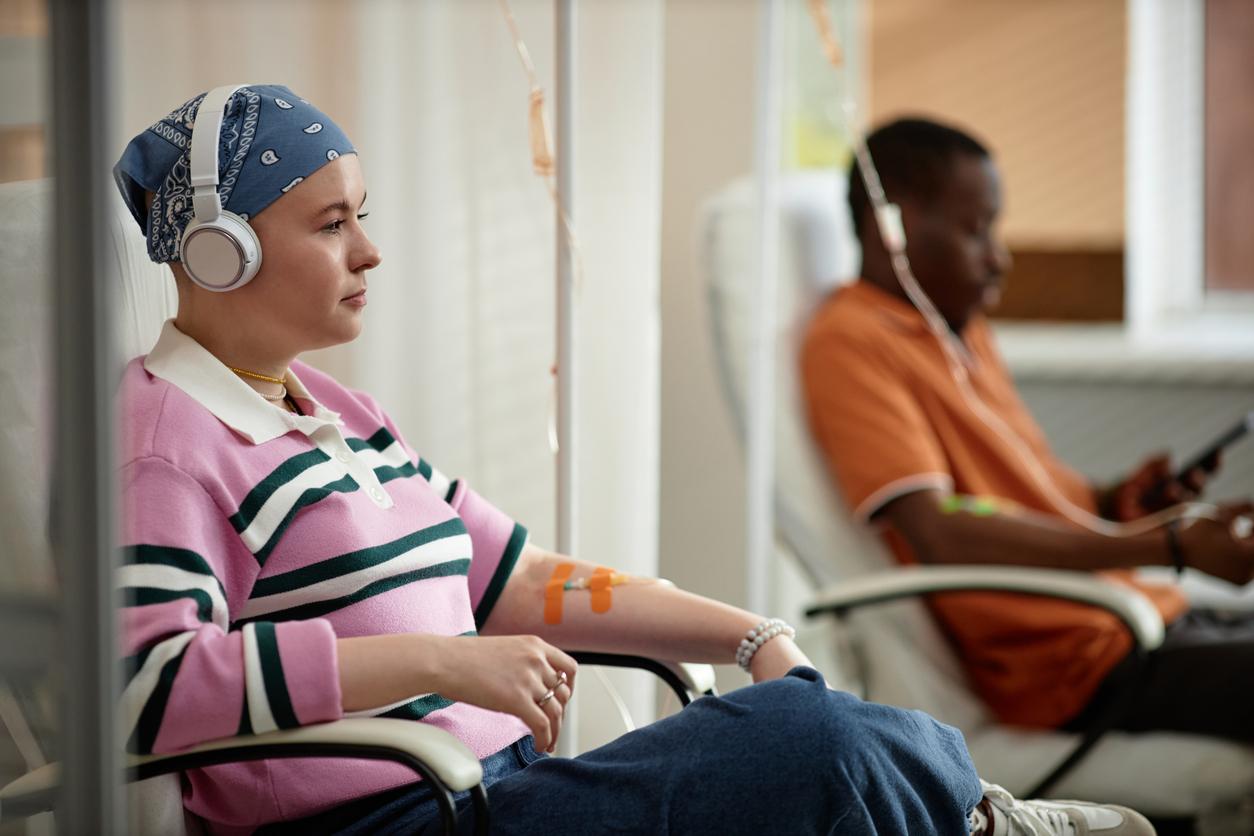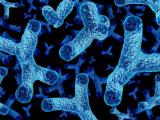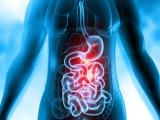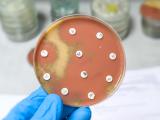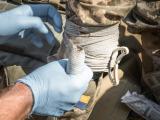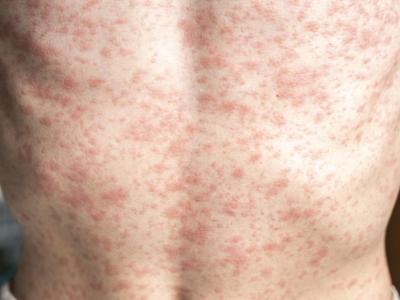A new study of cancer patients indicates that drug-resistant bacteria may pose more of a threat than previously known.
The study, published last week in The Lancet Oncology, mined 4 years of microbiologic data and found that the proportion of antibiotic-resistant and non-susceptible bacteria, along with incidence rates of key multidrug-resistant pathogens, were up to three times higher in outpatients with cancer than those without cancer.
The study is the first large multicenter study conducted in the United States to quantify the impact of antimicrobial resistance (AMR) on cancer outpatients. The authors say the increased resistance they observed poses a major clinical challenge in the outpatient setting and highlights the vulnerability of cancer patients.
"This patient population is just getting so exposed to these bad bugs that we really need to focus on better infection prevention, stewardship, and recognizing the risk," corresponding study author Diane Flayhart, MBA, director of global health at Becton, Dickinson and Company (BD), told CIDRAP News. "Clinicians need to recognize that the patients they're treating could have a drug-resistant infection and plan for mitigating that risk."
Higher proportions, incidence of AMR across pathogens
For the study, Flayhart and her colleagues at BD, along with oncologists and infectious diseases specialists from the United States and Canada, analyzed data on clinical bacterial cultures collected from patients with and without cancer at 198 US outpatient healthcare settings. Patients were included in the cancer cohort if they received medications indicated for cancer.
Bacterial infections are known to be the second-leading cause of death in cancer patients. And even when they are not deadly, they can disrupt cancer treatment. But the frequency and extent of drug-resistant infections in cancer patients, and how they impact treatment, are less well understood.
"Improving our understanding of the frequency and consequences of AMR in patients with cancer is a crucial step towards optimising antimicrobial stewardship and mitigating the possible negative effects of AMR on cancer management and outcomes," the study authors wrote.
Using the BD Research Insights Database, the researchers analyzed gram-negative and gram-positive pathogens collected from blood, respiratory tract, urine, skin, wound, intra-abdominal, and other clinical culture samples from April 2018 through December 2022. The primary outcomes were the proportion of non-susceptible pathogens with corresponding AMR odds ratios (ORs) and the AMR rate per 1,000 pathogen isolates evaluated with the corresponding incidence rate ratio (IRR).
This patient population is just getting so exposed to these bad bugs that we really need to focus on better infection prevention, stewardship, and recognizing the risk.
More than 1.6 million pathogens were identified from 27,421 patients with and 928,128 patients without cancer. Across all culture sources and all pathogens (except Acinetobacter baumannii), patients with cancer had higher proportions of resistant pathogens than non-cancer patients, particularly pathogens capable of causing severe infections.
For example, the proportion of carbapenem non-susceptible Pseudomonas aeruginosa isolates (14.3% vs 11.3%; OR, 1.22; 95% confidence interval [CI], 1.13 to 1.32) and Enterobacterales isolates (1.5% vs 0.8%; OR, 1.89; 95% CI, 1.72 to 2.07) was notably higher among cancer patients. In addition, Enterobacterales isolates were more than twice as likely to be multidrug-resistant (8.7% vs 4.5%; OR, 2.03; 95% CI, 1.95 to 2.11) in cancer patients.
Cancer patients also had higher AMR incidence rates across most of the evaluated pathogens, highlighted by two- and three-fold higher incidence of carbapenem-resistant P aeruginosa (IRR, 2.06; 95% CI, 1.91 to 2.21) and vancomycin-resistant Enterococcus (VRE) (IRR, 3.06; 95% CI, 2.89 to 3.24). The incidence ratio of VRE in respiratory samples from cancer outpatients was over 5.
The researchers also note that the prevalence of AMR was particularly high in isolates from urine from cancer patients, as well as those in skin and wound sites.
Flayhart said the team focused on some of the most dangerous bug-drug combinations because those are the pathogens that oncologists are most worried about in cancer patients. But she also noted that the higher incidence of fluoroquinolone-resistant Enterobacterales and other gram-negative bacteria was an important finding because fluoroquinolone antibiotics are frequently prescribed in cancer patients, and often empirically.
"We really wanted to look at those bugs, knowing that cancer patients were being more exposed to fluoroquinolones than non-cancer patients," she said. "The more often we get exposed to an antibiotic, the higher risk we have of our own bacteria becoming resistant to those antibiotics."
Higher AMR rates than in hospitalized patients
In a study published late last year in Cancer Medicine, the same team of researchers reported that AMR rates were 1.5 to 2 times greater in hospitalized cancer patients compared with hospitalized non-cancer patients. Flayhart said they expected that the rates of AMR would be lower in outpatients. But that wasn't the case.
"We were really surprised when we started digging into the outpatient data, because one of the reasons that we move cancer patients to outpatient settings is because you have less exposure to things that you may get in the hospital," she said. But she noted that cancer outpatients still have more exposure to healthcare settings—and healthcare-associated pathogens—than non-cancer patients.
Flayhart and her coauthors also suggest that the high rate of resistant pathogens in cancer patients might be related to the fact that patients on chemotherapy commonly receive antibiotics to prevent the infections that they are more susceptible to in their immune-suppressed state. Those antibiotics could be causing changes in the gut microbiome that result in colonization with resistant pathogens.
In an accompanying commentary on the newer study, experts from the University of Texas MD Anderson Cancer Center suggest that this area of research should be further explored.
"The gastrointestinal tract, as the probable primary site of initial colonisation by AMR bacteria, has a central role in this process, with the microbiome acting as a key defence," William Shropshire, MPH, PhD, and Samuel Shelburne, MD, PhD, wrote. "The growing interest in harnessing the microbiome to optimise cancer therapy presents an opportunity to simultaneously improve our understanding of AMR colonisation and infection risk."
Lessons for providers, patients
Flayhart and her colleagues say that whatever is behind the increased incidence of drug-resistant pathogens in cancer outpatients, the results suggest that outpatient settings need to be aware of the risk and take steps to reduce it. For providers, that means promoting better infection-prevention practices and increasing the use of rapid diagnostic tools to make sure patients are getting the right antibiotic for their infections.
Flayhart also wants cancer patients to start asking about the organism that's causing their infection, what antibiotics can be used, and how their cancer treatment might be affected.
"We all know someone who is dealing with cancer, and this study clearly highlights that everyone should be aware that effective antibiotics, alongside infection prevention and stewardship, are a critical tool needed during a cancer journey," she said.
